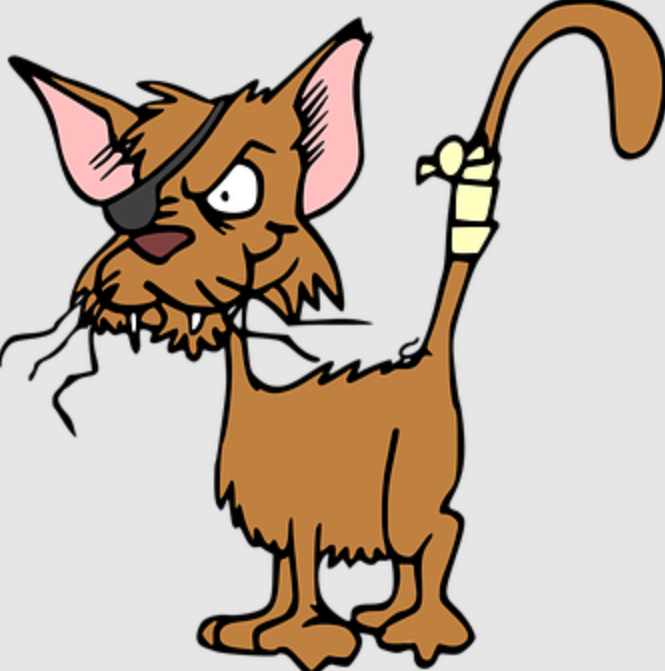11 November 2021
Vets in a Pickle
Dogged by problems
By Lynda Goetz
 In August, the front page headline of the vettimes was Warning as fewer vets from EU adds to ‘perfect storm’. The article pointed out that the number of EU vets registering to work in the UK was at its lowest for eight years and that this, in conjunction with the rise in the number of pet owners during the pandemic, as well as a global shortage of qualified vets, was putting unprecedented pressure on the profession.
In August, the front page headline of the vettimes was Warning as fewer vets from EU adds to ‘perfect storm’. The article pointed out that the number of EU vets registering to work in the UK was at its lowest for eight years and that this, in conjunction with the rise in the number of pet owners during the pandemic, as well as a global shortage of qualified vets, was putting unprecedented pressure on the profession.
This is not a new state of affairs. The profession has been aware of staffing problems (veterinary nurses are also in short supply) for a number of years, but events are conspiring to exacerbate an already critical situation. As far as the public is concerned, this can make it difficult in some areas of the country, particularly if you and your pet are not actually registered with a vet, to get an appointment. As far as farmers are concerned, this is also presenting problems; there is a shortage too of farm vets, as young graduates steer clear of isolated areas and lonely working lives. Five years ago, in October 2016, BBC’s Farming Today programme (unfortunately no longer available to listen to) was already highlighting this problem. Even then, the British Veterinary Association (BVA) was aware that a change in working conditions was deterring applicants. Life as a vet now bears no resemblance to that described in the James Herriot novels (nor it should be said, are most small animal practices anything like the animal hospital shown in Super Vet on TV).
 Last week, in the last few minutes of its programme, You and Yours interviewed Dr Kate Richards, the current (and 150th) President of the Royal College of Veterinary Surgeons (RCVS), following a rather heart-tugging interview with the owner of ’Ghost’ a companion dog with ophthalmology problems. Dr Richards identified the issues in the profession as being the ‘Three Rs’; Recruitment, Retention and Return.
Last week, in the last few minutes of its programme, You and Yours interviewed Dr Kate Richards, the current (and 150th) President of the Royal College of Veterinary Surgeons (RCVS), following a rather heart-tugging interview with the owner of ’Ghost’ a companion dog with ophthalmology problems. Dr Richards identified the issues in the profession as being the ‘Three Rs’; Recruitment, Retention and Return.
Recruitment is being addressed with the foundation of more vet schools; three having been added in the last six years; Surrey (2015), Harper and Keele (2020) and Aberystwyth (2021). The loss of a number of EU vets since Brexit has been quite keenly felt and not all European countries’ qualifications are now recognised – which makes it far harder for them to come and work here as they used to do before the end of the transition period. Veterinary qualifications are generally acknowledged to be amongst the hardest to obtain and selection has always been rigorous. Entry requirements for courses not only demand the very top grades, but also minimum amounts of pre-enrolment work experience. Although this varies according to the university, the necessary number of weeks can be almost impossible to obtain unless a student has decided fairly early on that this is what they want to do.
Once embarked on a course, the pace is relentless and all holidays are taken up with unpaid practical work experience, which includes everything from seeing how a farm works and assisting with lambing to working with an equine vet, being in a small animal practice and working within something like Blue Cross in an inner city environment. A few drop out at this stage, but most, having embarked on the path, complete the course. However, when it comes to starting work, it would appear that new graduates are not getting the support which they need in many cases. In the October 5th issue of vettimes, the front page headline reads Workforce Woes: vet schools only ‘part of the solution’. The new president of the BVA, zoo and wildlife vet Justine Shotton, acknowledged that times were very challenging and that in the profession sustainability also related to the workforce itself and workplace conditions.
 This issue was something that, interestingly, Dr Richardson studiously avoided in her radio interview on the You and Yours programme. When confronted directly with the problem of retention she sidestepped the question completely and referred instead to the successful initiative lobbying government to add vets to the shortage occupation list. When challenged further, she hid behind the fact that the issue of retention was ’complex’ and volunteered the information that there was going to be a ‘summit’ at the end of November to which ‘ a cross-section of stakeholders’ had been invited to ‘bring together all of the people who can think of ideas to take forward and move forward the situation’.
This issue was something that, interestingly, Dr Richardson studiously avoided in her radio interview on the You and Yours programme. When confronted directly with the problem of retention she sidestepped the question completely and referred instead to the successful initiative lobbying government to add vets to the shortage occupation list. When challenged further, she hid behind the fact that the issue of retention was ’complex’ and volunteered the information that there was going to be a ‘summit’ at the end of November to which ‘ a cross-section of stakeholders’ had been invited to ‘bring together all of the people who can think of ideas to take forward and move forward the situation’.
In reality, the situation of retention and the problem of attracting people to return to the profession (as well perhaps as that of recruitment) are one and the same and hinge around the issue of working conditions, respect and possibly, to a lesser degree, remuneration and reward. The veterinary profession has been in crisis for some time. It is now largely a female profession, with only 10% of undergraduates and graduates over the last 10 years or so being male. It is also a profession in which the older generation have ‘sold out’. It used to be the case that you could only own a veterinary practice if you were a vet. However, in 1999 the law was changed to allow non-vets to own veterinary practices. Of course you still need to have properly qualified vets to work in the practices, but the owners are now ‘money men’, corporate investors and venture capitalists for whom the bottom-line is what matters, not the animals or the vets who are now their employees.
 Most of the public are still unaware of this fact. Practice names have usually remained the same, even where all the old partners have gone. Many believe, completely erroneously, that the charming young lady who is treating their cat or dog is ‘raking it in’. After all, it costs a fortune to see a vet and pay for consultations and medications, doesn’t it? The young lady is very likely, after all those years of studying and training (at least 5) and months and months of unpaid work experience (often paying her own travel costs and accommodation), to be on a salary of around £30,000. Vets with a few more years’ experience and further specialist qualifications will earn anything between £40,000 and £70,000: hardly a fortune. In return for that they may well be on call every other weekend and one or even two nights a week. They love animals and, like the even more poorly paid vet nurses, will give a great deal of themselves to their job. Not only is the remuneration not lavish and the work life balance terrible, but they are also subjected to fairly constant abuse from clients – mostly to do with the cost of treatment. As for ‘out of hours’ calls made by pet owners, another survey reported in a September issue of Vettimes showed that 70% of these were unnecessary. That is a very high percentage and shows both a cavalier sense of entitlement (‘I’m paying so I can call whenever I feel like it’) and a total lack of understanding of how the system works (does the existence of the NHS perhaps have something to do with this attitude?)
Most of the public are still unaware of this fact. Practice names have usually remained the same, even where all the old partners have gone. Many believe, completely erroneously, that the charming young lady who is treating their cat or dog is ‘raking it in’. After all, it costs a fortune to see a vet and pay for consultations and medications, doesn’t it? The young lady is very likely, after all those years of studying and training (at least 5) and months and months of unpaid work experience (often paying her own travel costs and accommodation), to be on a salary of around £30,000. Vets with a few more years’ experience and further specialist qualifications will earn anything between £40,000 and £70,000: hardly a fortune. In return for that they may well be on call every other weekend and one or even two nights a week. They love animals and, like the even more poorly paid vet nurses, will give a great deal of themselves to their job. Not only is the remuneration not lavish and the work life balance terrible, but they are also subjected to fairly constant abuse from clients – mostly to do with the cost of treatment. As for ‘out of hours’ calls made by pet owners, another survey reported in a September issue of Vettimes showed that 70% of these were unnecessary. That is a very high percentage and shows both a cavalier sense of entitlement (‘I’m paying so I can call whenever I feel like it’) and a total lack of understanding of how the system works (does the existence of the NHS perhaps have something to do with this attitude?)
All things considered, it is easy to see why the president of the RCVS did not want to talk openly about the ‘complex’ problem of retention. If she were to do so, she would make recruitment even more difficult; far better to keep quiet and attempt to resolve this with a ‘cross-section of stakeholders’ behind closed doors. Are these ‘stakeholders’ going to include those ordinary hard-working young vets whose futures have been whisked away from them and sold to ‘bean-counters’ who see them and their care of animals simply as a means of earning returns from their investment? No longer is there much prospect of being able to become a partner (ie an owner) in a practice. For many vets this of itself is immaterial; they never wanted to become business people in the first place. However, what has also changed is the entire nature of the workplace. A practice owned by a corporate functions in a different way. The owner is not ‘one of us’; not a group of like-minded partners. The owner is a faceless corporation which is pushing products; encouraging sales of its own branded goods whether or not they are suitable (e.g. balls which are too small and could be easily swallowed) and if it can ‘sweat’ its workforce then so much the better.
In a survey conducted by the BVA earlier this year, only 40% of vets described their workplace as ‘very good’. 10% felt it was ‘not good’. In a page on ‘Breakroom’ one employee of CVS (one of the largest corporates in the business) wrote in September this year, ‘No work life balance. Hardly ever do contracted hours, always expected to do overtime at basic rate. Criticized by management if we are not able to do extra work. Under staffed. Low paid for working in unsociable conditions and working very long hours. Not all staff treated the same’. The best thing about the job was apparently ‘Driving and some of the people I work with’.
As an advertisement for a career in veterinary that is hardly going to encourage recruitment, retention or return. As Stan Rawlinson wrote in ‘Is the Veterinary Profession broken?’ in June last year in The Doglistener, ‘Profit should never be the main driving force in any type of medical care, be it human or animal’. Tony Blair’s legislation in 1999 has clearly not been good for the public, pets or the profession. The public needs to be educated about the situation and the profession needs to stand up to those who now own it and appear to be in the driving seat. Money cannot be made by those owners without the professionals, but both vets and vet nurses care too much about those they are treating to cause harm. Furthermore, women have long been shown to be far more reticent about demanding better pay and conditions. Given that they now constitute the majority of the profession, will the long hours, late nights, unnecessary out of hours calls and complaints about bills continue until their own health is in jeopardy and they quit? Where will this leave all those venture capitalists, not to mention all those pandemic puppies? In a pickle, all of them.
Photo attributions:
1) Pug with lampshade from Unsplash (Priscilla du Preez)
2) Pug with blanket – Unsplash (Mathew Henry)
3) Cartoon poorly dog Pixabay no attribution required
4) Cartoon cat and dog as 4) above

